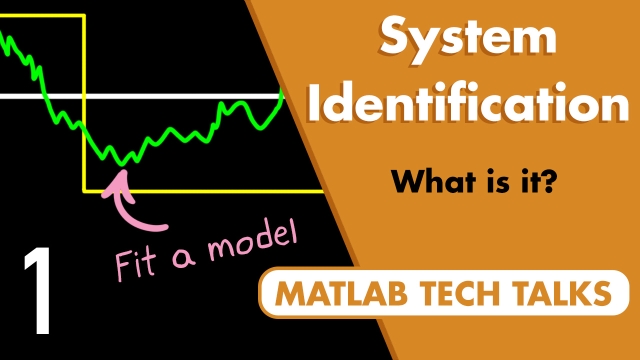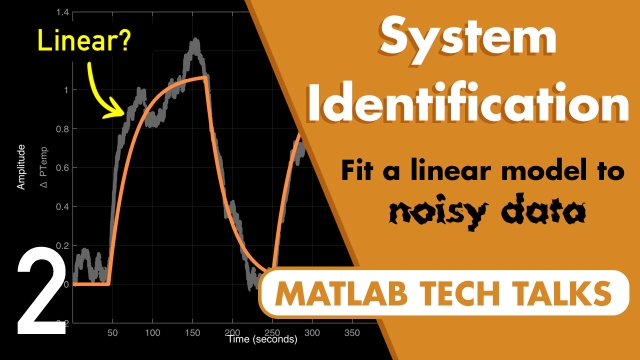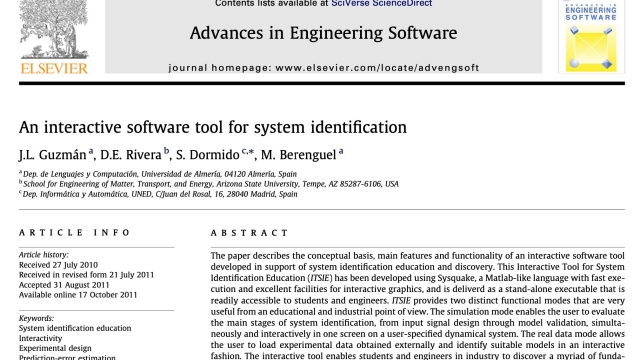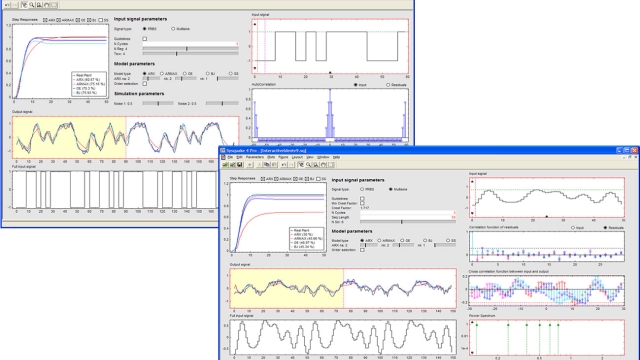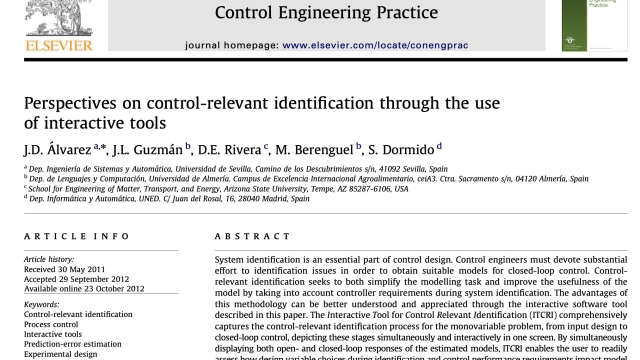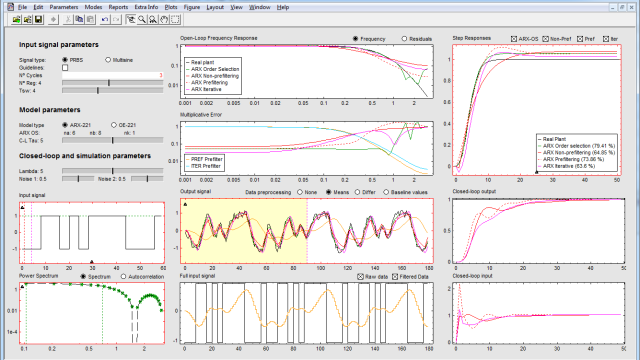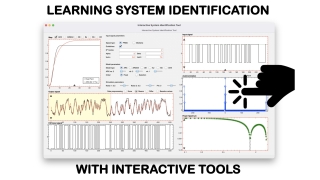
This journey introduces a fun and different way to learn Linear System Identification concepts by using interactive tools. Open-loop and closed-loop criteria are analyzed and discussed.
System identification deals with the problem of building dynamical models of systems from experimental data, and is a key component in control engineering practice. Control engineers must devote substantial effort to identification issues in order to obtain suitable models for simulation or closed-loop control purposes. It is often considered the most challenging and time-consuming step in control engineering practice and thus represents an important component in the professional training of any control engineer; to this end, flexible and simple-to-use software tools are essential.
There are many powerful software tools available for system identification, but these tools do not evaluate all stages of the system identification process (experimental design, model structure selection, parameter estimation, and validation) in an integrated fashion. System identification is naturally performed in an iterative manner, that is, it involves a refining process where subsequent stages need to be recalculated step by step when a parameter or specification is modified. Thus, interactive software tools address these concerns in support of advancing system identification education.
Classical system identification is focused on satisfying ‘‘open- loop’’ criteria that may lead to high-order models that are not be directly suitable for control system design. However, by taking into account controller requirements during system identification, it becomes possible to both simplify the modelling task and improve the usefulness of the model with respect to the intended application of control design; this is the essence of control- relevant identification. Control-relevant identification seeks to both simplify the modelling task and improve the usefulness of the model by taking into account controller requirements during system identification.
So, this journey is composed by 6 resources that are recommended to see and read in the corresponding order:
- What is System Identification? A nice video from Brian Douglas to introduce the open-loop system identification concept.
- Linear System Identification. Second video by Brian Douglas to show how to fit and validate models.
- Manuscript about Linear Open-Loop System Identification concepts by using Interactive Tools.
- ITSIE: An interactive tool to practice all the previous concepts in just one single interactive window.
- Manuscript about Perspectives on Control-Relevant Identification Through the Use of Interactive Tools.
- ITCRI: An interactive tool to practice Control-Relevant System Identification concepts in just one single interactive window.
Note: it is important to mention that interactivity, which is one of the most important features of the software tools presented in this journey, cannot be fully appreciated through written text alone. Thus, the reader is cordially invited to download the tools and personally experience its interactive features.
This video provides a nice introduction for System Identification concept. For those who are in the first time learning about system identification, it is strongly recommended to watch this video and the following one before using the interactive tools.
What Is System Identification? | System Identification, Part 1
Get an introduction to system identification that covers what it is and where it fits in the bigger picture. See how the combination of data-driven methods and physical intuition can improve...
See MoreAfter learning about the System Identification ideas from the previous video, this second video shows how to obtain models from data. Fitting and validation ideas are explored by using examples. This video should be watched, and the concepts understood, before using the interactive tools presented in the following resources of the journey.
Linear System Identification | System Identification, Part 2
Learn how to use system identification to fit and validate a linear model to data that has been corrupted by noise and external disturbances Noise and disturbances can make it difficult to...
See MoreThis manuscript summarizes the main steps in the system identification process: experimental design, model structure selection, parameter estimation, and validation. These steps are first briefly described from a theoretical point of view, and afterward are combined and presented as part of an interactive tool called ITISE, which is available in the next resource of this journey.
Manuscript about ITISE: an Interactive Software Tool for System Identificati...
The paper describes the conceptual basis, main features and functionality of an interactive software tool developed in support of system identification education and discovery.
This...
See MoreThis resource provides an Interactive Tool for Linear System Identification for open-loop purposes. The main advantage of the tool is that all the system identification process steps (experimental design, model structure selection, parameter estimation, and validation) are integrated in a single interactive screen. So, once any parameter of the system identification process is modified (input values, simulated noise, model structure, model order, etc.), the rest of the steps are immediately and visually updated thanks to the interactive capabilities.
ITSIE: An Interactive Software Tool for System Identification Education
ITSIE is an Interactive Tool for System Identification Education. The tool is developed using Sysquake, a Matlab-like language with fast execution and excellent facilities for interactive...
See MoreOnce the classical open-loop system identification ideas have been learned from the previous resources of this journey, control relevant identification is introduced in this manuscript. Control-relevant identification allows taking into account controller requirements during system identification procedure. It is shown that, by this way, that becomes possible to both simplify the modelling task and improve the usefulness of the model with respect to the intended application of control design.
Perspectives on Control-Relevant Identification Through the Use of Interacti...
This paper presents a control-relevant identification methodology through an intuitive interactive tool called "Interactive Tool for Control Relevant Identification (ITCRI)". ITCRI...
See MoreThis journey concludes with a new interactive tool to work on Control-Relevant identification (ITCRI) ideas. Similarly to ITSIE, presented in the fourth resource of this journey, ITCRI allows to comprehensively capture the control-relevant identification process, from input design to closed-loop control, depicting these stages simultaneously and interactively in one screen. By simultaneously displaying both open- and closed-loop responses of the estimated models, ITCRI enables the user to readily assess how design variable choices during identification and control performance requirements impact model error and ultimately, closed-loop performance.
ITCRI: An Interactive Software Tool for Control-Relevant Identification
The Interactive Tool for Control Relevant Identification (ITCRI) comprehensively captures the control-relevant identification process, from input design to closed-loop control, depicting...
See More
